Did you know that more than 70% of costly garage floor repairs could be avoided with just a few simple winter care tips? As temperatures drop and road salt, slush, and moisture invade your garage, ignoring your garage floor can turn minor issues into expensive headaches. Whether you have epoxy, concrete, or a polyaspartic garage floor, implementing the right maintenance steps now will help you save time and money while keeping your garage space looking its best all winter long. In this guide, you’ll discover why winter garage floor care matters, practical solutions for every home, and insider advice to make your seasonal routine both efficient and cost-effective.
A Surprising Fact: Why Winter Garage Floor Care Tips Matter More Than You Think
"According to industry reports, more than 70% of costly garage floor repairs could be avoided with seasonal maintenance."
Winter isn’t just another season—it’s the time when your garage floor faces the toughest tests. When snow and ice find their way inside, they bring along road salt, dirt, and moisture, which can quickly damage even the toughest floor coatings. Every year, unsuspecting homeowners discover that avoiding winter care tips leaves their garage floor at risk for pitting, cracking, and unsightly salt stains. Regular attention doesn’t just enhance the appearance of your garage floor—it extends the life of your investment and prevents the need for repairs or even a full floor replacement. In fact, choosing the right routines and protective products now will help ensure your garage looks great through all the winter months without the stress of costly surprises.
What You'll Learn from These Winter Garage Floor Care Tips
How to protect garage floors from winter salt, moisture, and cold
Best practices for keeping your garage floor clean and dry during winter
Whether polyaspartic garage floor coatings offer superior winter care
Essential maintenance routines to prolong your garage floor's lifespan
Money-saving tips for winter garage floor maintenance
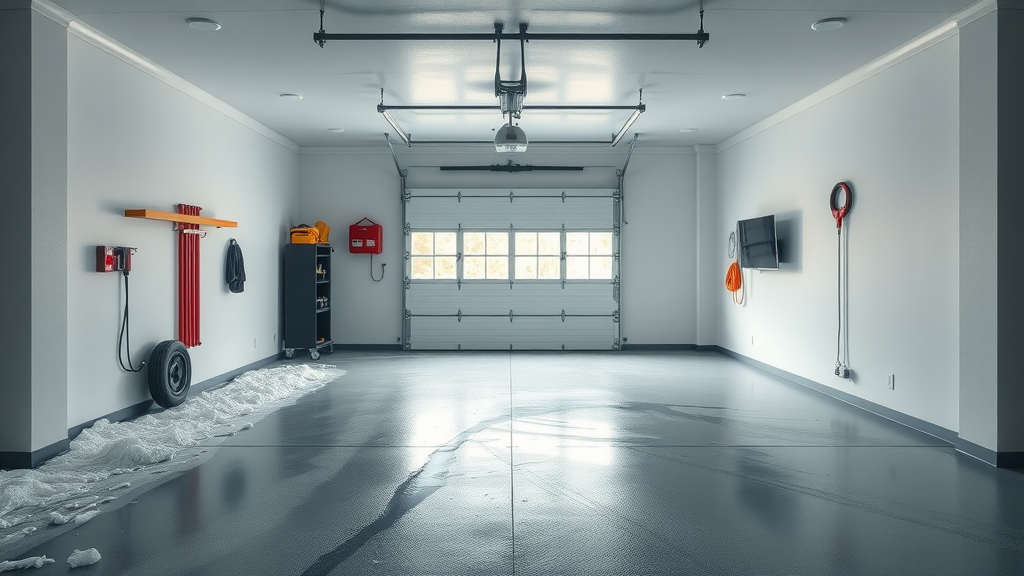
Understanding Garage Floor Damage: Threats Posed by Winter
Garage floors are subjected to far more than just vehicle traffic in the winter. As temperatures fall, daily activities like parking a snow-covered car or tracking in bootfuls of road salt can accelerate wear and tear on even the most resilient surfaces. Salt and chemicals used on roadways break down concrete and wear away floor coatings, causing unsightly stains and surface pitting. Moisture infiltration—such as melted snow and slush—can seep into small cracks, freeze, and then expand, creating bigger fissures and long-term structural problems. Over time, the repeated freezing and thawing cycle worsens these issues and may even reach beneath the surface, threatening the overall integrity of your garage floor. Additionally, cold brings with it peeling coatings and slippery patches, raising safety concerns for anyone using the space.
Common Issues Every Garage Floor Faces During Winter
Salt corrosion and stains
Moisture infiltration and freezing
Slips, cracking, and peeling coatings
"Neglecting winter care tips for your garage floor often leads to expensive repairs—or even full floor replacement." – Flooring Maintenance Expert
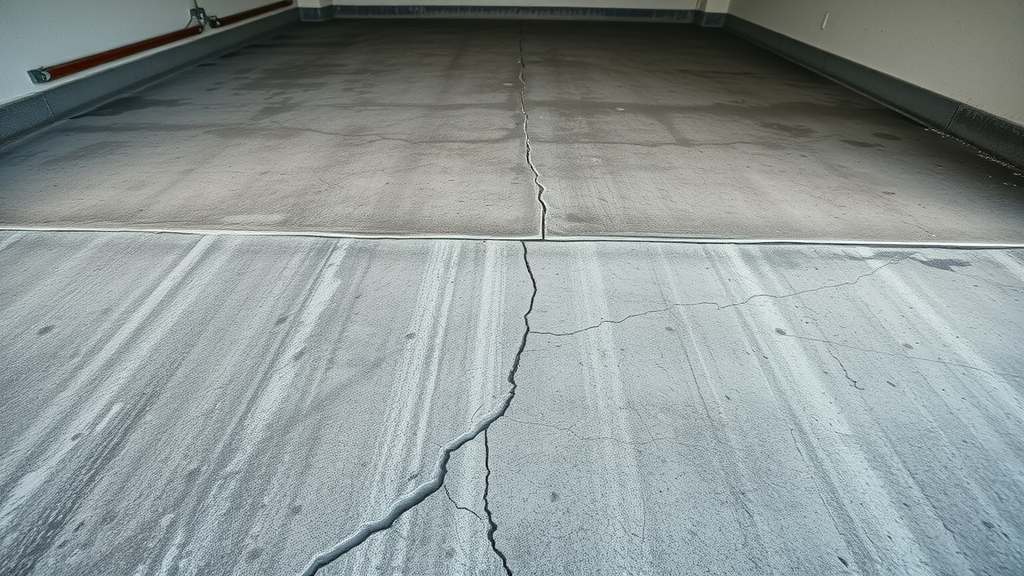
Winter Garage Floor Care Tips: Daily & Weekly Actions
Daily and weekly maintenance is your first and best defense against winter wear. Proactive routines not only keep your garage floor clean, but also prevent the slow buildup of salt residue, dirt, and moisture that leads to lasting damage. By routinely sweeping or vacuuming, you reduce the risk of salt working its way into micro-cracks and wearing away your floor coating. Likewise, promptly dealing with melted snow and water pooling limits opportunities for freezing and cracking. These simple actions, performed regularly, ensure your garage is safer and looks great even through the harshest winter months—making it easier to transition into spring shows your floor clean and damage-free.
Daily Garage Floor Clean Routines for Winter
Sweep away debris and salt daily
Use a wet/dry vacuum for melting snow
Check for pooling water and dry quickly
For best results, make it a habit to sweep your garage floor as soon as you see new dirt and salt. Road salt not only leaves stains but can deteriorate both concrete and coatings if left unchecked. A wet/dry vacuum is your best ally for picking up slush and melted snow—a quick pass once or twice a day saves hours of scrubbing later. Always finish by checking for pooling water; drying problem areas with absorbent towels or mats stops moisture from seeping into cracks and freezing overnight. Establishing these routines extends the life of your garage floor and keeps your garage living area both clean and hazard-free, no matter the time of the year.
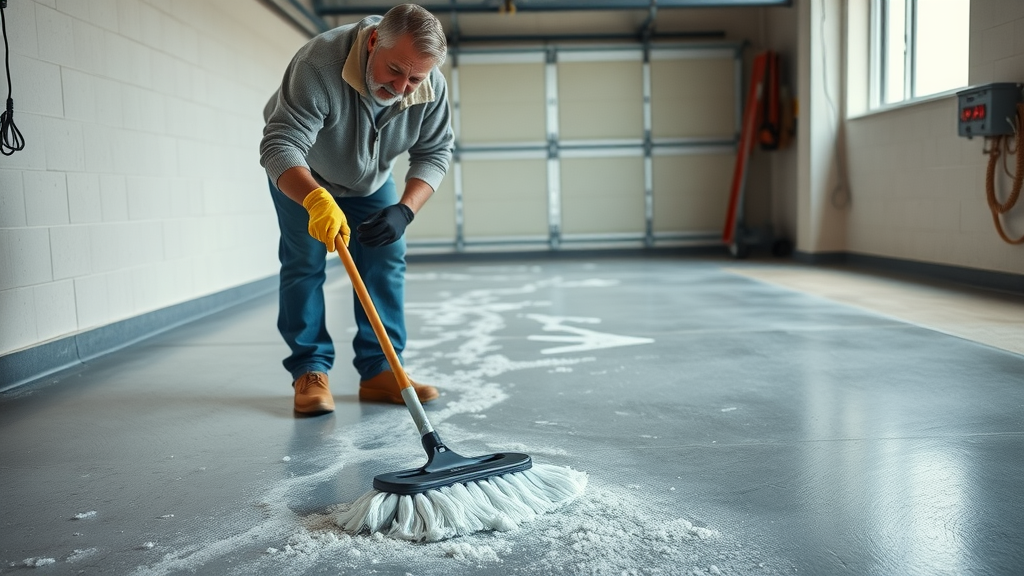
Weekly Winter Care for Polyaspartic Garage Floor Coating
Inspect floor coating for chips or wear
Clean up spills immediately to avoid stains
Reapply protective sealants as needed
If your garage floor features a polyaspartic floor coating, winter care is simple but critical. Inspect the floor surface every week for signs of chips, scratches, or uneven wear—especially near the garage door where snow and salt accumulate. Thanks to the tough, chemical-resistant nature of polyaspartic coatings, most hazards can be wiped away without issue, but any spills—from oil to slush—should be cleaned up immediately. Polyaspartic garage floors typically need less frequent reapplication of sealants, but it’s wise to check manufacturer recommendations about topping up protective layers. This consistency will ensure your garage floor coating looks great and lasts for years, even during the most challenging months.
Choosing the Right Floor Coating for Winter Garage Floors
The choice between epoxy and polyaspartic floor coatings is especially relevant when winter approaches. While both offer protection far superior to bare concrete, polyaspartic garage floor coatings stand out in snow-prone areas. Their rapid curing times mean installation is possible even in fluctuating winter temperatures, and their inherent resistance to salt, moisture, and UV damage makes them ideal for harsh environments. By carefully selecting the right winter-ready coating, homeowners can effectively defend their garage floors against the ongoing threats of salt residue, pooled water, and repeated freeze-thaw cycles.
Comparing Epoxy vs. Polyaspartic Floor Coatings for Winter
Feature |
Epoxy Coating |
Polyaspartic Floor Coating |
|---|---|---|
Durability |
Good, but may yellow and chalk over time; can chip from salt |
Excellent—resistant to chemicals, road salt, and impacts |
Drying/Curing Time |
36-72 hours (needs warm, dry conditions) |
~1-2 hours (can cure in cold weather) |
Salt & Chemical Resistance |
Moderate—can stain or degrade with repeated exposure |
High—prevents stains and corrosion even in frequent use |
Winter Advantages |
Needs optimal conditions; vulnerable to peeling in cold/damp |
Maintains gloss and strength even in winter weather |
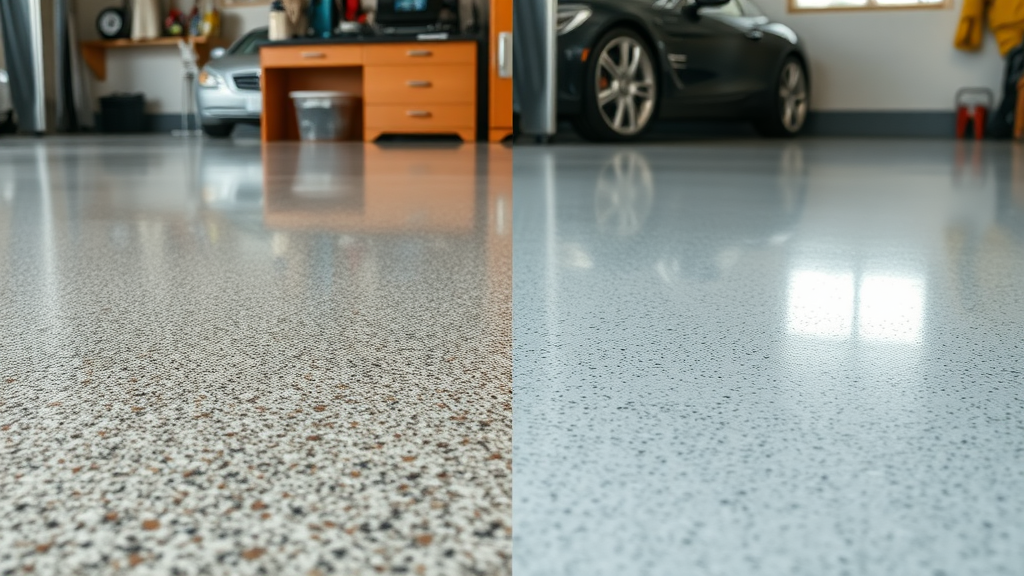
Why Polyaspartic Garage Floor Coatings Excel in Winter Care
What sets polyaspartic floor coatings apart, especially during the winter, is their exceptional resilience to moisture, salt, and drastic temperature changes. Polyaspartic coatings remain glossy, smooth, and damage-free throughout the season, repelling salt, slush, and oil stains that would otherwise shorten the lifespan of traditional epoxy. Because polyaspartic floor coating can be applied even in low temperatures, projects don’t have to wait until spring arrives—making winter installations or repairs possible. The surface stays easy to clean, resists abrasions from tire chains or shovels, and doesn’t peel or crack, ensuring your investment is protected when your garage needs it most.
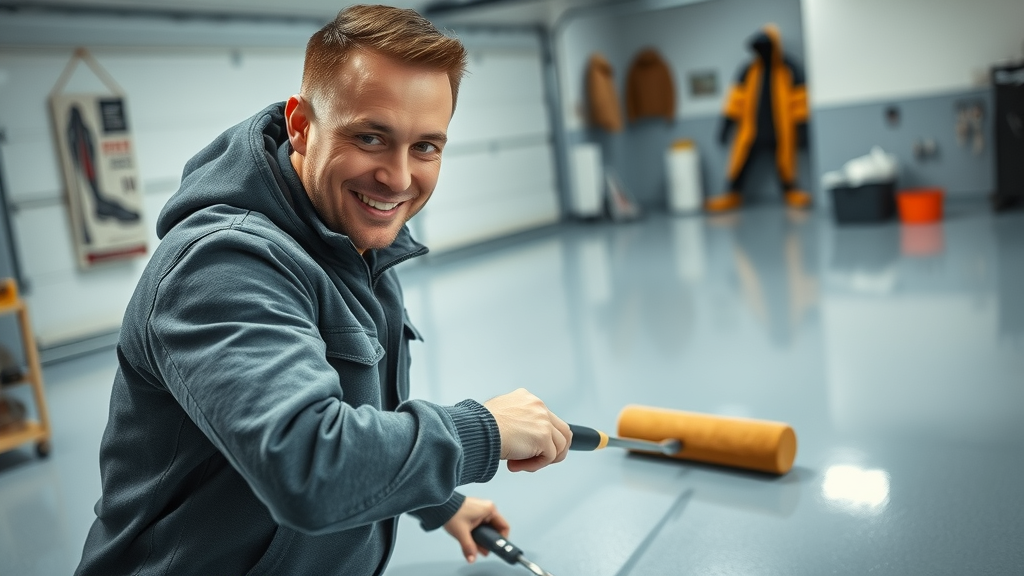
Feature: Professional Design Consultation for Garage Floors
"A design consultation can significantly increase the performance and longevity of your winter-ready garage floor."
Whether you are building a new garage or renovating your space, scheduling a design consultation with a flooring expert helps you select the ideal garage floor coating and care plan for winter. Professionals can help you choose between epoxy or polyaspartic, identify areas most at risk, recommend slip-resistant finishes, and provide a maintenance routine tailored to your local climate. This personalized approach extends the life of your floors, prevents costly mistakes, and ensures your garage stays safe and functional throughout the coldest months. If you want your garage floor to look great and last longer, a design consultation is a smart investment.
People Also Ask: Essential Winter Garage Floor Care FAQs
How to keep your garage floor clean in the winter?
Keeping your garage floor clean in the winter means regularly removing dirt, salt, and melted snow before they can cause corrosion or staining. Make a habit of sweeping and vacuuming daily, especially after tracking in road salt. Use absorbent mats near entrance points, and don’t let pools of water or slush linger. For stubborn salt residue, use a non-corrosive, pH-neutral cleaning solution. This routine prevents long-term damage and ensures your garage floor remains in top condition all winter.
How to dry out a garage floor in winter?
To keep your garage floor dry during the winter, start by identifying any sources of recurring moisture, such as melting snow from cars or leaks around the garage door. Use absorbent mats or towels to quickly blot up water, and employ a wet/dry vacuum for larger puddles. Maintaining good ventilation, even briefly opening your garage door on dry days, can also help. For persistent dampness, consider a portable heater or dehumidifier to encourage evaporation—just make sure the floor is dry before reapplying any treatments or coatings.
How to keep garage floor warm in winter?
Warming your garage floor in winter doesn’t have to be expensive. Install insulated mats or area rugs in high-traffic zones to add a buffer between your feet and the cold surface. Heated garage floor systems or portable space heaters are more advanced options to maintain comfort if you use your garage as a workspace. Insulating walls and sealing around the garage door also help retain heat, reducing drafts and preventing cold air from seeping onto the floor surface.
Can you seal a garage floor in the winter?
Yes, you can seal a garage floor in the winter—especially with modern polyaspartic coatings. Unlike epoxy, which requires warm, dry conditions to cure, polyaspartic products can be installed and set properly even at low temperatures. Before sealing, make sure the floor is clean and thoroughly dry to ensure the new coating bonds correctly. Winter sealing provides immediate protection from salt, water, and chemical exposure, keeping your garage floor in optimal shape no matter the weather outside.
Winter Garage Floor Care Tips: Budget-Saving Methods
DIY garage floor winterizing solutions
Cost-effective alternatives to full floor coating replacement
Energy-saving tricks for heated garage floors
Maintaining your garage floor in winter doesn’t have to be costly. DIY winterizing solutions, like applying penetrating sealers or using affordable absorbent mats, add protection without the expense of professional upgrades. If replacing the entire floor coating isn’t in your budget, consider touch-up kits or targeted repairs for high-traffic zones, which can extend the life of your existing floor. Energy-saving tricks, such as strategically placing rugs or insulating your garage doors, help retain warmth without running up your heating bill. These methods keep your garage space functional and attractive while protecting your finances.
Best Lists: Products & Tools for Effective Winter Garage Floor Care
Top-rated floor cleaning solutions for garages
High-quality snow and water absorbent mats
Best squeegees and wet/dry vacuums for garage care
Choosing the right products can streamline your winter garage floor care routine. Look for pH-neutral cleaners that remove salt and grime without damaging coatings, as well as highly absorbent mats that trap snow, slush, and salt residue at entry points. Equip yourself with a sturdy, easy-to-use squeegee for managing water, and a reliable wet/dry vacuum to quickly clear melting snow. These products, combined with seasonal best practices, ensure your floor remains clean and protected all winter long.
Expert FAQs: Winter Garage Floor Care Tips
What is the most durable winter floor coating? — Polyaspartic floor coatings are considered the most durable for winter, thanks to their resistance to salt, chemicals, and rapid temperature changes.
How often should I clean my garage floor during winter? — It's best to clean your garage floor daily, or at least every other day, to prevent buildup of salt, snow, and debris.
What cleaning chemicals are safe for polyaspartic floor coatings? — Choose pH-neutral, non-abrasive cleaners; avoid harsh acids that could compromise the protective topcoat.
Should I use mats or rugs for winter garage floor care? — Yes, placing mats or rugs in high-traffic areas helps absorb moisture and salt, keeping your floor safer and cleaner.
Key Takeaways on Winter Garage Floor Care Tips
Consistent maintenance saves money long-term
Polyaspartic coatings offer superior winter protection
Daily and weekly routines prevent costly damages
Professional consultations enhance longevity
Conclusion: Make Winter Garage Floor Care Tips Your Seasonal Routine
Making winter garage floor care part of your seasonal routine preserves your floor, saves you money, and keeps your garage looking its best all year round.
Ready to Upgrade? Call Us Now for a Free Garage Floor Care Consultation
Call Us now to get your FREE Quote! 800-280-9210
Watch daily and weekly routines for cleaning, salt removal, and water management on different garage floor coatings—all with step-by-step expert tips.
See a professional application of polyaspartic garage floor coating in a winter setting, from prep to finishing, and learn why it outperforms other solutions.
To further enhance your understanding of winter garage floor maintenance, consider exploring these resources:
“7 Ways to Keep Your Garage Clean During Winter” (utahgaragedoors.net)
“5 Tips for Keeping Your Garage Clean This Winter” (info.wd-door.com)
These articles provide practical advice on maintaining a clean and safe garage environment during the colder months. By implementing their recommendations, you can effectively protect your garage floor from winter-related damage.
 Add Row
Add Row  Add
Add 

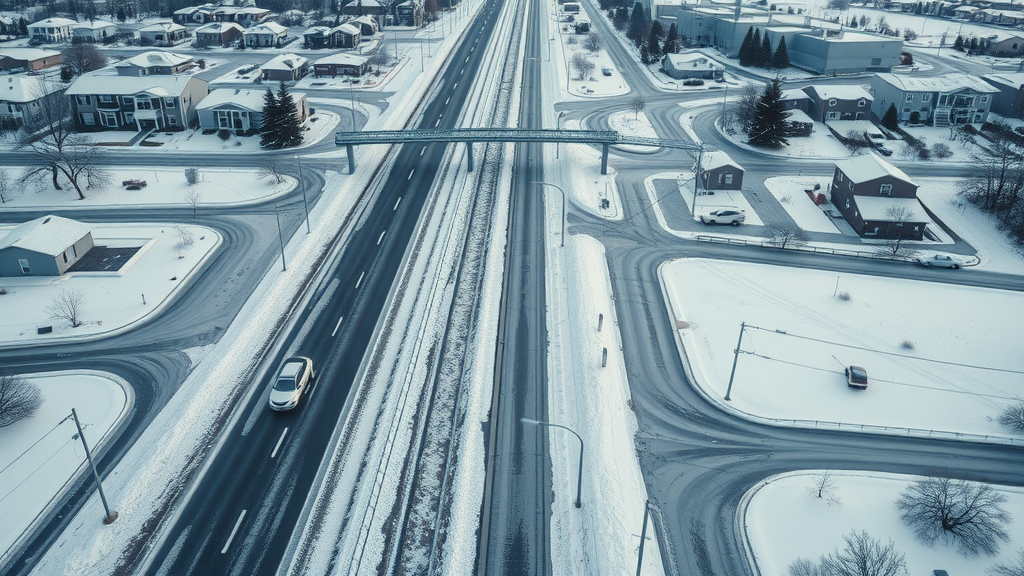
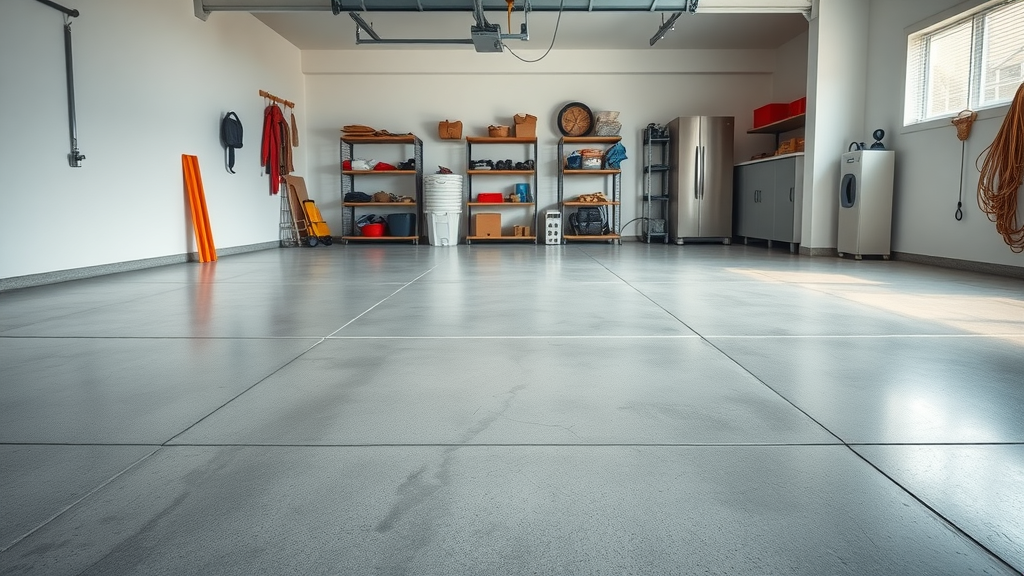
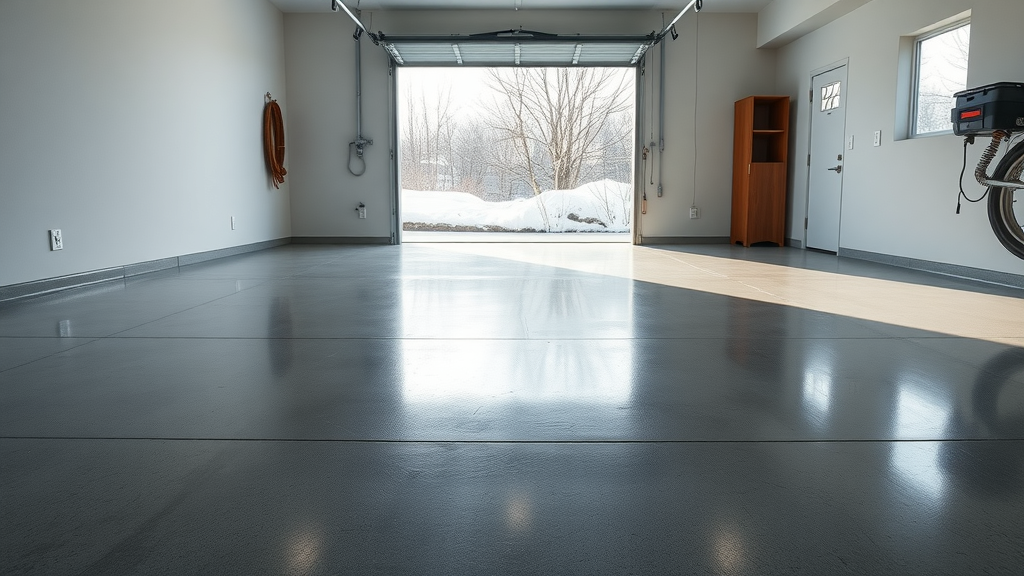
Write A Comment